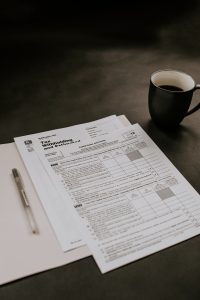Forex is the largest financial market in the world, with a daily turnover of over $5 trillion. It is a decentralized market, with no central exchange or regulatory body. Instead, it consists of a network of banks, financial institutions, and individual traders who buy and sell currencies. Forex prices can move in response to various factors, including economic news, political events, and market sentiment. However, forex can also move with no news, which can be confusing for traders who rely on fundamental analysis. In this article, we will explore how forex moves with no news and what factors can influence its direction.
Before we dive into the specifics of how forex moves with no news, it is important to understand the role of fundamental analysis in forex trading. Fundamental analysis is the process of analyzing economic and financial data to determine the intrinsic value of an asset. In the case of forex, fundamental analysis involves analyzing economic indicators such as GDP, inflation, interest rates, and unemployment rates to predict the future direction of a currency pair. Traders who use fundamental analysis often rely on news releases and economic data to inform their trading decisions.
However, forex can also move with no news, which means that there is no specific event or announcement driving the price movement. In these cases, forex prices can be influenced by a variety of factors, including technical analysis, market sentiment, and order flow.
Technical analysis is a method of analyzing price and volume data to identify patterns and trends in the market. Traders who use technical analysis often rely on charts and indicators to identify potential trading opportunities. For example, a trader might look for a specific chart pattern or a crossover of two moving averages to enter or exit a trade. Technical analysis can be particularly useful in markets where there is no clear news driving the price movement.
Market sentiment refers to the overall mood or attitude of traders towards a particular currency pair. Market sentiment can be influenced by a variety of factors, such as economic data, political events, and news headlines. However, it can also be influenced by more subjective factors, such as rumors, social media chatter, and intuition. When market sentiment is bullish, traders are optimistic about the future direction of a currency pair and are more likely to buy it. Conversely, when market sentiment is bearish, traders are pessimistic and are more likely to sell.
Order flow refers to the buying and selling activity in the market. In forex, order flow is the net demand for a currency pair at any given time. When there is more demand than supply, prices rise, and when there is more supply than demand, prices fall. Order flow can be influenced by a variety of factors, including technical analysis, market sentiment, and news events. In some cases, order flow can be the primary driver of price movement, even when there is no news or economic data to support it.
In conclusion, forex can move with no news, and there are several factors that can influence its direction. Traders who rely on fundamental analysis should be aware of these factors and incorporate them into their trading strategies. Technical analysis, market sentiment, and order flow can all play a role in driving forex prices, even in the absence of clear news or economic data. By understanding these factors, traders can gain a more comprehensive view of the market and make more informed trading decisions.





